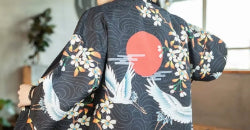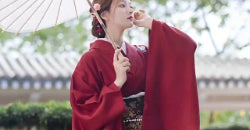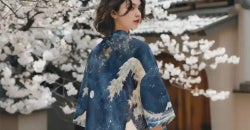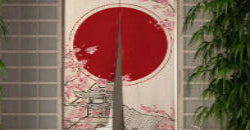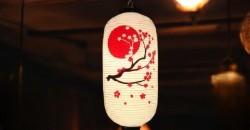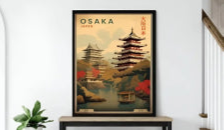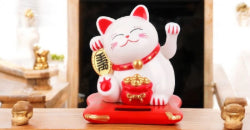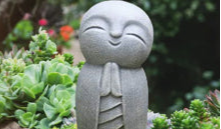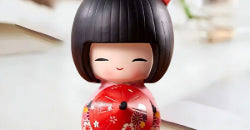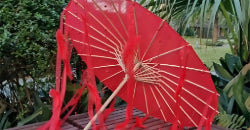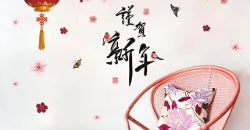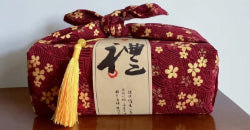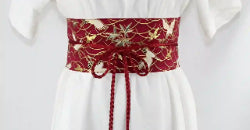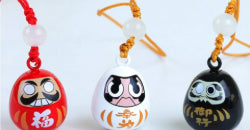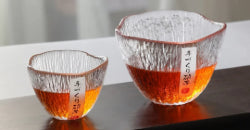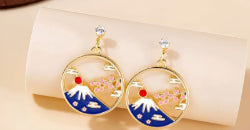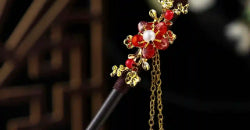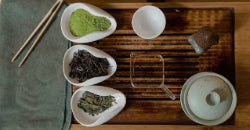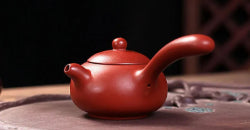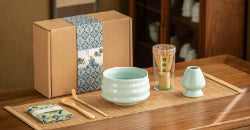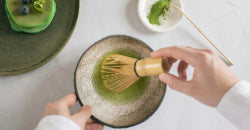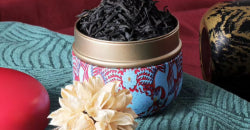12 Emblematic Flowers of Japan and Their Cultural Symbolism

Source: Freepik
Japan maintains a profound relationship with nature, where each flower embodies a story and a specific meaning. These 12 emblematic flowers reveal symbolic cultural riches, bearing witness to Japanese traditions and beliefs. Discover in this magazine the plants imbued with meaning, revealing their importance in Japanese art, poetry, and rituals.
1. Japanese Plum (Ume)
Symbol of the month of January , the Japanese plum blossom, or Ume, announces the end of winter and renewal. This deciduous tree can reach up to 12 meters in height . Its flowers appear at the end of winter, even before the leaves, offering landscapes imbued with poetry. They come in several shades, from white to dark pink, sometimes tending towards coral. The Ume embodies many symbolic qualities, such as:
-
resistance to winter cold,
-
the hope of renewal; and
-
a discreet beauty imbued with inner strength.
In the city of Okutama, north of Tokyo, 25,000 plum trees bloom each year, attracting many visitors. The prunes from this tree are also used in cooking, particularly in the form of fermented paste or savory confectionery .
2. Adonis Ramosa (Fukujusô)
A flower associated with the month of February, the Adonis Ramosa (or Fukujusô) grows in mountainous undergrowth. Lively in nature, it thrives in moist, well-drained soil. Its early flowering makes it one of the first visible signs of spring. Its bright yellow petals bring vitality to the still-cold landscapes of late winter.
Native to the Hokkaido and Kyushu regions, this flower is now rare in the wild. However, it is preserved in botanical gardens such as Kyoto, where it is regularly featured. The Fukujusô symbolizes happiness and good fortune, and its mere presence in a garden evokes a promise of better days.
3. Japanese Camellia (Tsubaki)

Source: Freepik
In March, the Japanese camellia , or Tsubaki, marks the transition to spring. An evergreen shrub, it is covered in generous flowers in shades of red, pink, or white. Each flower has a silky texture that captures the light and highlights the delicacy of its shapes. Native to Japan, the camellia has inspired many local artists and designers.
This emblematic flower can be found in various textile supports such as:
-
traditional kimonos;
-
embroidered silk obis; and
-
Contemporary clothing inspired by Japanese fashion.
The Tsubaki can be seen in Kawaguchi, at the Horticultural Promotion Center. Symbolically, the camellia evokes elegance, discretion , and sincere love. In the past, its silent fall also evoked the noble death of the samurai .
4. Japanese Cherry Blossom (Sakura)
Japan's unofficial national flower, the cherry blossom, embodies fleeting beauty. Its blossoms, called sakura , cover the trees in April, the highlight of Japanese spring. This spectacular bloom attracts thousands of Japanese every year for picnics under the blossoming trees during Hanami.
The Sakura is not just a decorative flower. It carries a strong cultural message: that of the fragility of life and its fleeting beauty. In France, this flower is often associated with a romantic aesthetic. However, in Japan, it also embodies collective memory. Mount Yoshino , near Nara, brings together more than 30,000 cherry trees for an unforgettable panorama. Cherry trees are frequently depicted on traditional Japanese kimonos , true living canvases expressing the season, social status, or beliefs. Furthermore, to buy traditional kimonos, visit our collection to discover authentic models combining elegance and Japanese know-how.
5. Glycine (Fuji)
In May, wisteria unveils its long purple clusters, illuminating gardens with enchanting colors. This Japanese climbing plant spreads widely, transforming even the simplest spaces into true havens of beauty. The cascade of its flowers is reminiscent of a gentle shower of petals, inviting serenity.
Every spring, the Byodoin Temple in Kyoto holds a festival in honor of this spectacular bloom. At the same time, the lily of the valley, called Suzuran , begins to brighten the Japanese landscape. This season symbolizes profound renewal and encourages meditation. In Japanese culture, wisteria embodies tenderness and lasting bonds, themes frequently celebrated in poetry, painting , and other traditional art forms.
6. Japanese Iris (Hanashôbu)

Source: Freepik
The Hanashôbu iris thrives in wetlands and water gardens, especially in June. Its large flowers can display shades of blue, purple, or white, often marked with contrasting patterns. This hardy variety is highly valued for its robustness and generous flowering in early summer. At the Meiji Shrine in Tokyo , the irises impress with their
-
various colors;
-
dark foliage; and
-
reflections in the water.
The iris embodies elegance, quiet strength, and hope. It is also associated with protection against evil spirits, which explains its presence in certain ancient ceremonies.
7. Chrysanthemum (Kiku)
The chrysanthemum , or Kiku, is much more than just an ornamental flower in Japan. An imperial symbol, it appears on the emperor's seal and adorns certain coins. Its presence marks official documents and underlines nobility. In Japan, it is also associated with longevity and lasting joy, far from the funerary connotations it may have in the West.
Every autumn, the Chrysanthemum Festival (Kiku Matsuri) celebrates this flower in many regions. Yellow varieties symbolize the sun and immortality. Red varieties express deep love, while white ones are sometimes associated with mourning. This wealth of symbolism reflects the complexity of Japanese plant culture.
8. White Lotus (Hasu)
The white lotus emerges from murky waters to offer a perfect flower, making it a very powerful spiritual symbol . In Buddhism, it embodies purity of body and mind, as well as the path to enlightenment. Its bloom in summer recalls the ability to overcome hardships to achieve a form of fulfillment. Each color of lotus carries a specific meaning:
-
white for perfection;
-
the rose for Buddha;
-
blue for wisdom.
The red lotus represents love, and the purple lotus represents spirituality . This aquatic plant thus stands as a bridge between the material world and the spiritual universe. In Japan, it is often found in temples and Zen gardens.
9. Peony (Botan)
The red peony is one of Japan's most majestic flowers. Its opulent appearance and subtle fragrance have captivated for centuries. In Japanese floral language , it represents courage, honor, and inner strength—qualities so admired in traditional Japanese culture. Its multiple meanings make it a very common flower, whether in traditional Japanese tattoos called irezumi , on decorative fabrics and panels, or at various family celebrations. The peony also embodies the feminine ideal. Its spring bloom marks a moment of contemplation, where beauty, tradition, and quiet pride blend together.
10. The Adonis Ramosa

Source: Freepik
Adonis Ramosa, also called Fukujusô , is a perennial plant with bright yellow flowers that blooms in late winter in the mountainous regions of Japan. Although it is poisonous, its early and bright flowering makes it a particularly popular flower. Its appearance in still-snowy landscapes announces the arrival of spring and symbolizes optimism, light and the promise of better days.
During the Edo period, this flower was often given to loved ones as a sign of happiness and prosperity. It held a special place in homes for its beneficial aura. Today, the Adonis Ramosa has become rare in the wild, but it is preserved in specialized places. The Kyoto Botanical Garden , in particular, still allows you to admire it at certain times of the year, a living testimony to the Japanese floral tradition .
11. Carnation (Nadeshiko)
The carnation, or Nadeshiko, is closely associated with the mother figure in Japan . Given on Mother's Day, it expresses maternal love in a pure and sincere form. The petals, sometimes serrated, come in red, pink, or white. Each shade evokes a specific feeling in the Japanese floral language.
This flower also symbolizes distinction and tenderness. In the arts, the term " Yamato Nadeshiko " refers to the Japanese feminine ideal: beautiful, gentle, and full of virtue. Unlike in some countries where the yellow carnation evokes contempt, in Japan it retains a positive and affectionate connotation. Its long flowering makes it present from spring to autumn .
12. Hydrangea (Ajisai)
The hydrangea, or Ajisai, has enjoyed great popularity since the Nara period. Its clustered flowers and changing colors depending on the soil are as captivating as they are intriguing. From blue to pink to purple, each shade tells a story of moisture, light, and transformation.
Some criticize it for its chromatic instability, seeing a lack of consistency. However, the hydrangea symbolizes strong and lasting bonds:
-
within the family;
-
in sincere relationships; and
-
in deep friendship.
Festivals are held throughout the country dedicated to it. This flower holds a special place in early summer, when the tsuyu rains cause its corollas to bloom in Japanese gardens and temples.
What is the name of the flower of death in Japan?

Source: Freepik
In Japan, the flower associated with death is called Higanbana (彼岸花), which literally means " equinox flower ." This mysterious plant, also known by its scientific name Lycoris radiata , belongs to the Amaryllidaceae family. It blooms in late summer, often near cemeteries, reinforcing its symbolic connection to the world of the dead. Its slender silhouette and spider-like red petals make it both fascinating and disturbing.
It is also nicknamed “flower with 600 names” because of its many names, such as:
-
Red lycoris;
-
Red spider lily; and
-
Japanese Amaryllis.
This nickname reflects the richness of its cultural interpretations. Higanbana evokes the afterlife, definitive separation, and the passage to another life. It embodies an ephemeral beauty imbued with solitude and mystery.











